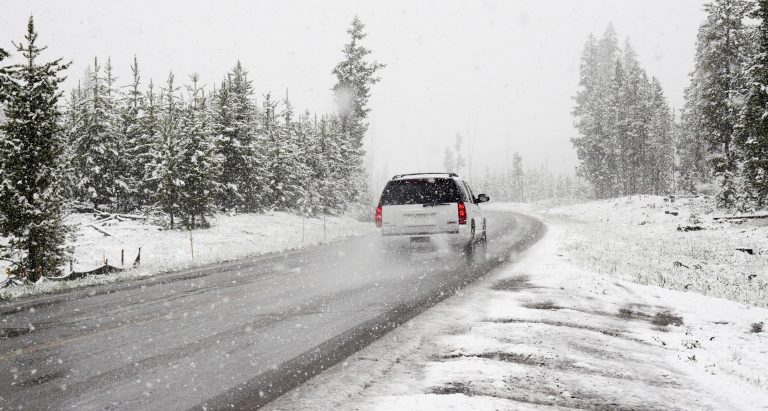As a long-time San Diego resident, you’re not accustomed to driving in harsh weather conditions. But this winter, you may be going on a long trip to visit family for the holidays.
A winter road trip requires a bit more preparation than a summer road trip. Here are six things you need to know.
- How to Drive in Snow
If you haven’t driven in snow before, it might take some getting used to. Wet and slippery road conditions can cause your car to slide off the road.
Cautious driving can make winter driving accidents less likely. Follow these driving tips:
- Drive slowly. It takes your car longer to stop, accelerate, decelerate, and turn on icy roadways. Make driving easier on your car by staying below the speed limit. When you need to stop, slow down gradually rather than braking quickly.
- Increase following distance. Stay at least three seconds behind the car in front of you. This gives you more time to stop. Plus, if your car gets into trouble, it makes it less likely that you’ll hit the car in front of you.
- Prepare to go up hills. Your car will have greater difficulty moving up a hill in the snow. Build up some speed on the flat road before making it up the hill. Don’t stop in the middle of a hill, which can cause your car to lose traction. Don’t try to quickly accelerate up the hill either, which will cause your wheels to spin.
If road conditions become too dangerous, pull over and wait for the storm to pass.
- How to Remove Ice from Your Car
If you leave your car sitting overnight, you might wake up to a frosted windshield. To remove the ice, simply follow these steps:
- Set your car to the defrost windows setting.
- Spray your windshield with saltwater or a commercial de-icer and then wipe it off your windshield.
- Use an ice scraper to scrape the ice from your windshield.
You can prevent ice from building up by parking your car in a garage or covering it with a tarp.
- How to Fit Snow Chains
If you’re driving through mountains, tire chains can help your car move forward. Some areas even require chains before you can drive on the roads. To fit the snow chains on your tires:
- Put the car in park with the parking brake on.
- Hold the chain over the top of the tire and place it over the tire.
- If there are rings on the chain, secure the rings to the inside of the wheel. The open part of the ring should be at the bottom of the wheel.
- Connect the open part of each ring.
- Use these steps to put the other chain on your other tire.
- Drive forward about a meter. Then stop the car, put it in park, and put on the parking brake.
- Now that the bottom of the wheel is exposed, finish securing and tightening the chain on both tires.
Look at the manufacturer instructions for any additional tips about your specific chains.
- How to Get Your Car Unstuck
If your car is stuck in heavy snow drifts and cannot move forward, try this process:
- Shift to a low gear.
- Try rocking your car. Move the vehicle forward, then switch to reverse and move it backward. Keep switching between moving forward and backward to create momentum.
- Spread sand or cat litter in front of your tires for better traction.
- Try letting some air out of your tires. Make sure your tires are pointed straight ahead.
- If your car still doesn’t move, use a shovel to remove the snow from your car’s vicinity. Then drive forward.
If these methods don’t work, you’ll need to call for towing.
- What to Get Checked
Before you set off on your winter road trip, you should have a mechanic check your car to ensure it’s prepared to drive in tough conditions. Make sure the mechanic checks:
- Brakes
- Tires
- Lights
- Belts and hoses
- Heater and defroster
- Oil
- Exhaust
- Battery
- Antifreeze
- Wiper blades
- Windshield washer fluid
The mechanic will point out anything you need to get repaired or replaced before your drive. It’s a good idea to get your oil changed as well.
- What to Bring
As you pack your luggage for your trip, make sure you also pack your car with winter necessities. Include the following:
- First aid kid, including band-aids, ointment, and medicine
- Blankets and warm clothing
- Flashlights
- Sand or cat litter
- Shovel
- Ice scraper
- Tow rope
- Booster cables
- Food and water
- Cell phone charger
- Maps and GPS
These supplies will help you in any type of emergency situation.
While traveling during the winter can be dangerous, knowing these tips can help you navigate a safe winter journey. Make sure you get your car checked by a reliable auto service center before you head out.

